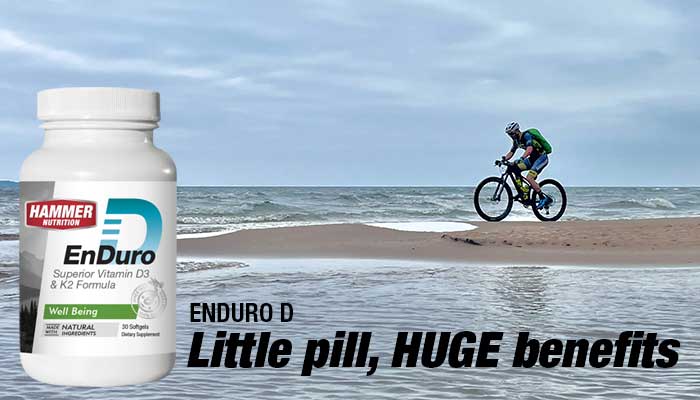
BY STEVE BORN
I don’t know about you, but when I see the words “titanium dioxide” on the labels of various foods, my first reaction is not, “Yum! Can’t wait to chow down!” Seriously, do the words titanium dioxide make your mouth water and get your taste buds tingling? Didn’t think so.
However, a sizable body of research suggests that people are more likely to buy and eat foods that are brighter or more vibrant in color. Professor Charles Spence states that color “is the single most important product-intrinsic sensory cue when it comes to setting people’s expectations regarding the likely taste and flavor of food and drink.” [1]
Titanium dioxide is one way to make that happen.
A white powder extracted from naturally occurring minerals, titanium dioxide white pigment—aka titanium white, pigment white 6, or CI 77891—is used in numerous non-edible products such as cosmetics, sunscreens, paints, and plastics.
In foods, titanium dioxide is an additive known as E171, one of the most used food additives containing nanoparticles (a tiny particle—between 1 – 100 nanometers—that’s undetectable by the human eye). E171 is found in a variety of foods, including baked goods, chocolate, candy/sweets, chewing gum, coffee creamer, frosting, pudding, salad dressings, sauces, and more.
In fact, the Food Scores database currently shows that more than 1,800 brand-name foods list titanium dioxide (E171) on their ingredient label(s). [2] There could be significantly more than that, however, as some foods containing titanium dioxide may state "artificial color" or "color added" on the ingredient label. It's no stretch to say that titanium dioxide is close to being in the majority of foods available to us.
While there’s nothing that would make me want titanium dioxide in my foods to begin with, research [3, 4] and commentary on one of those pieces of research [5] definitely makes me want to be extra vigilant in avoiding it altogether. It should make you feel that way as well.
In the first piece of research, entitled “Safety assessment of titanium dioxide (E171) as a food additive”, the panel stated that “although gastrointestinal absorption of TiO2 [titanium dioxide] particles is low, they may accumulate in the body.” And it is this accumulation of E171 nanoparticles (NPs) that concerned the panel. Although they did find negative effects on reproductive and developmental toxicity, the panel stated that “Observations of potential immunotoxicity and inflammation with E171 and potential neurotoxicity with TiO2 NPs, together with the potential induction of aberrant crypt foci [clusters of abnormal tube-like glands in the lining of the colon and rectum] with E171, may indicate adverse effects.”
The panel concluded that “Based on all the evidence available, a concern for genotoxicity [the ability of harmful substances to damage genetic information in cells] could not be ruled out, and given the many uncertainties, E171 can no longer be considered safe when used as a food additive.” In 2021, the European Food Safety Authority came to the same conclusions, leading to titanium dioxide (E171) being banned as a food additive in the European Union.
The second piece of research, while mentioning the conclusions of the European Food Safety Authority, looked instead at the effects of E171 accumulation once the exposure to E171 was stopped. What they found was that E171 was accumulated in the cells after 24 hours of exposure, with an increase in free radicals, DNA damage, molecular alteration, and other deleterious cellular effects noted. After the removal of E171, the researchers found that they were "unable to revert the alterations found after 24 hours of exposure in colon cells.” They concluded that “exposure to E171 causes [cellular] alterations that cannot be reverted after 48 hours if E171 is removed from colon cells.”
By now, it should be pretty clear that titanium dioxide/E171 is a food additive that causes some seriously harmful effects on the body and should be avoided at all costs. Thomas Galligan, head scientist for additives and supplements at the Center for Science in the Public Interest, summarizes: “Unlike other chemicals used in food, titanium dioxide has no nutritive, preservative, or food safety function—its use is purely cosmetic. The prospect of titanium dioxide nanoparticles damaging DNA is concerning enough for us to recommend consumers avoid foods that have it.”
Closing Comment: As a follower of Endurance News Weekly, you've no doubt noticed that, of late, we've been writing more frequently about diet and other topics related to overall health. In fact, since late October 2022, only 2 of the last 12 articles were about supplementation and fueling. Oh, we’ll keep writing about both of those, no question about it. However, while proper fueling and prudent supplementation are unquestionably important, we firmly believe that both take a back seat to first making sure we do whatever we can to maintain optimal health. This position is eloquently stated by one of Hammer's long-time friends and contributors to many of our knowledge resources: “You must be a healthy person first, an athlete second, and an endurance athlete third.”
REFERENCES:
[1] https://flavourjournal.biomedcentral.com/articles/10.1186/s13411-015-0031-3
[2] https://www.ewg.org/foodscores/ingredients/19149-TITANIUMDIOXIDE/search/
[3] https://doi.org/10.2903/j.efsa.2021.6585
[4] https://pubmed.ncbi.nlm.nih.gov/35973603/
[5] https://www.efsa.europa.eu/en/news/titanium-dioxide-e171-no-longer-considered-safe-when-used-food-additive










12 comments
Thank you for valuing our health over everything else!
Excellent articles! Thank you! I especially liked the article on food dyes. I read the list of ingredients on the label of the water enhancer product I was using and there is was – red dye 40! I tossed the product.